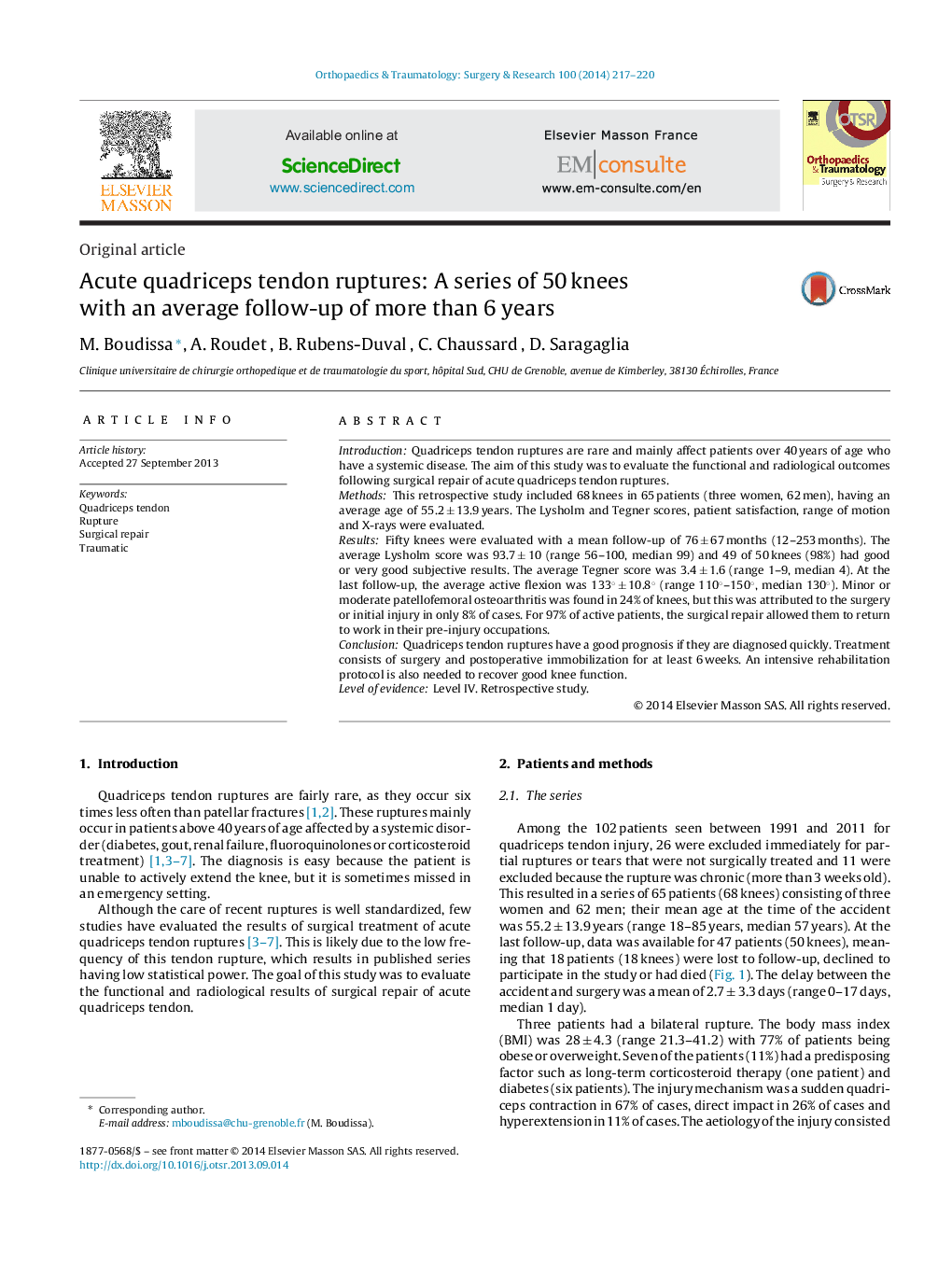| Article ID | Journal | Published Year | Pages | File Type |
|---|---|---|---|---|
| 4081512 | Orthopaedics & Traumatology: Surgery & Research | 2014 | 4 Pages |
IntroductionQuadriceps tendon ruptures are rare and mainly affect patients over 40 years of age who have a systemic disease. The aim of this study was to evaluate the functional and radiological outcomes following surgical repair of acute quadriceps tendon ruptures.MethodsThis retrospective study included 68 knees in 65 patients (three women, 62 men), having an average age of 55.2 ± 13.9 years. The Lysholm and Tegner scores, patient satisfaction, range of motion and X-rays were evaluated.ResultsFifty knees were evaluated with a mean follow-up of 76 ± 67 months (12–253 months). The average Lysholm score was 93.7 ± 10 (range 56–100, median 99) and 49 of 50 knees (98%) had good or very good subjective results. The average Tegner score was 3.4 ± 1.6 (range 1–9, median 4). At the last follow-up, the average active flexion was 133° ± 10.8° (range 110°–150°, median 130°). Minor or moderate patellofemoral osteoarthritis was found in 24% of knees, but this was attributed to the surgery or initial injury in only 8% of cases. For 97% of active patients, the surgical repair allowed them to return to work in their pre-injury occupations.ConclusionQuadriceps tendon ruptures have a good prognosis if they are diagnosed quickly. Treatment consists of surgery and postoperative immobilization for at least 6 weeks. An intensive rehabilitation protocol is also needed to recover good knee function.Level of evidenceLevel IV. Retrospective study.
